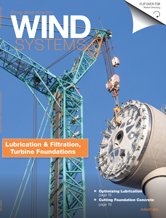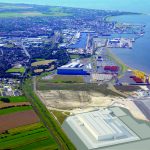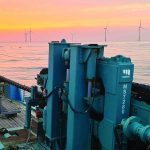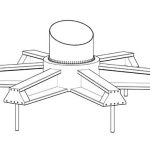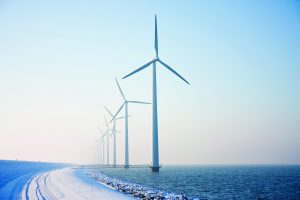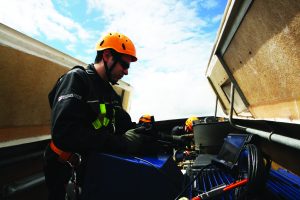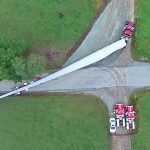
When you imagine a future for wind energy nationwide, you don’t have to look farther than the state of Iowa as a shining example of what could be.
Iowa is already the national leader in wind-power generation, and we have a goal — and a plan to achieve it — to be the first state in the nation to meet 40 percent of our electricity needs from wind power by 2020.
In April, MidAmerican Energy Company, our state’s largest energy provider, announced plans to invest $3.6 billion in additional wind capacity, putting our state on pace to reach that 40 percent goal.
Wind currently generates more than 30 percent of Iowa’s power, the largest share of any state. Spinning wind turbines dot our rolling fields, each one generating clean energy and providing income for farmers, revenue for local governments, and jobs for Iowa families.
Iowa’s central location, positive business climate, and transportation infrastructure have made the state an attractive location for global turbine manufacturers. Today, almost the entire turbine life cycle, from manufacture to assembly to construction, can occur within Iowa’s borders.
The people of Iowa have also been instrumental in the success of the industry. The entrepreneurism and ingenuity of our state’s small business owners have had an immeasurably positive effect on wind energy as a whole. As wind-turbine manufacturing has scaled, Iowa companies have been pioneers. They have overcome obstacles and piloted solutions later put into practice globally.

An example of such a company is KPI Concepts in Burlington, in southeastern Iowa on the Mississippi River. KPI Concepts manufactures wooden components for turbine blades. Its founder, Craig Upton, manufactured shelving for retail stores, when in 2008 an executive from Siemens contacted him and asked if he also could make blade components. Today, Craig manufactures components for both Siemens and TPI Composites, making use of machines that he designed.
Iowa’s public universities and their excellent engineering colleges have also embraced the state’s leadership in wind energy, undertaking academic research to further the industry and developing specialized programs to educate the next generation of wind-energy engineers and policy makers. The state’s extensive network of community colleges has taken on the challenge of developing the industry’s on-the-ground workforce and has created specialized programs that are educating technicians who install, maintain, and service modern wind turbines.
Our leadership in clean-energy generation also has drawn large, socially minded companies from outside of the wind industry to Iowa. Google and Facebook were attracted to Iowa in part because of our state’s abundance of renewable energy, with both companies partnering with local utilities to directly purchase wind-generated power.
The state of Iowa is a leader in renewable energy today because of the commitment from stakeholders statewide. It was a journey that began in 1983, when Iowa passed the nation’s first renewable electricity standard, a bill that I signed into law.
At that time, our state was almost entirely dependent on coal for electricity. That first law required investor-owned utilities in Iowa to own or contract for a combined 105 MW of renewable generating capacity.
Today, our state’s utilities generate more than 6,200 MW of wind electricity, a figure that will continue to steadily grow. Our businesses and residents also have some of the lowest energy costs in the country, an important factor in Iowa, where advanced manufacturing is our leading industry.

Wind-power manufacturing itself supports 7,000 jobs in Iowa, and turbine operators provide millions of dollars annually in lease payments to farmers. This economic impact cannot be overlooked, which is why I have supported, and continue to support, our state-level wind-energy incentives, as well as the federal government’s renewable electricity production tax credit (PTC). I commend the work done by members of Congress who voted to extend the PTC last December, which has restored a necessary level of predictability to the market.
Moving forward, we are planning for our state’s future energy needs with a coordinated state energy plan, which Iowa Lt. Gov. Kim Reynolds is leading in collaboration with stakeholders in the private sector.
The plan, which is scheduled to be completed this fall, will include an assessment of current and future energy supply and demand, examine existing energy policies and programs, and identify emerging energy challenges and opportunities. The plan will also synthesize the existing state energy goals and strategies that are beneficial for the state, as well as outline new goals and strategies to position Iowa for the future.
The reasons behind Iowa’s current leadership in wind generation extend beyond the fact that the wind blows strong and steady here. It started with forward-thinking policy, was augmented by our state’s business-friendly approach and has succeeded due to an all-in, collective effort. We are justifiably proud of where we are today, but it has not chilled our ambition. We invite other states to follow Iowa into a future of cleaner, more sustainable power generation.
















